709
And about the "pat the cat, bitch!" everything is forgotten ?!
Zoo English town Banham Banham Zoo two weeks ago officially revealed to the public young wild cat manul, born at the end of April 2012.
Total four grown kittens, which until recently were safely sheltered by his mother in the den and zoo staff did not know their exact number.
In addition, fearing bring any infection to susceptible to this kind of diseases of animals, zoo staff never even came to the den of the female manul. Only two weeks ago, when the grown young began to run out of the den in the outdoor aviary, it was found that four of them.
10 photos via goodnewsanimal

This is the first kittens of Pallas 'cat in the zoo since 2009, when a couple of Pallas' cats were brought to the UK from the Czech zoo Jihlava Zoo breeding program for rare species of cats.
Before the birth of these four kittens in zoos in Europe contained only 125 Pallas' cats. This is a great success of the breeding program since 1988 to 13 zoos of the world contained only 35 Pallas' cats. Each kitten -manul comes in a special account, and very valuable.
Soon these kittens veterinarians inspect and make them all the necessary vaccinations.
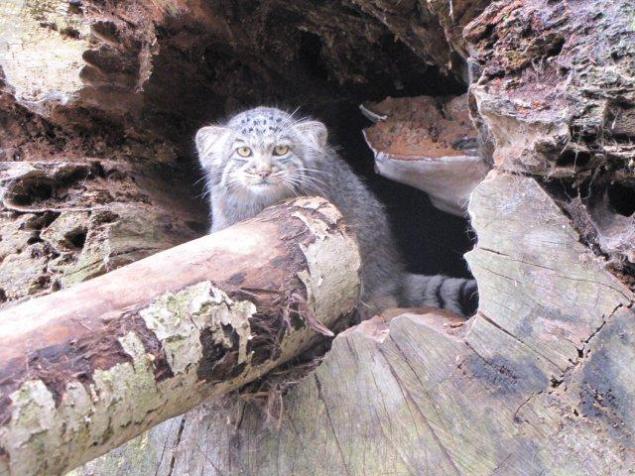
Pallas' cat (Felis manul; synonymous - Otocolobus manul) - a wild predator felines. The length of its body 52-65 cm, tail 23-31 cm; it weighs 2-5 kg. From an ordinary cat, he has a more dense, massive body on short thick legs, very thick hair (per square centimeter has to 9000 hairs.
Pallas' cat inhabits Central and Central Asia, South Caucasus and from Iran to Western Transbaikalia, Mongolia and northwest China. In Russia, Pallas' cat is found in the Chita region in the wilderness, in Buryatia in the forest steppe and steppe regions, as well as in the Republic of Tyva and Altai. Manuli live in areas with a continental climate, where the winters are cold and not very snowy.
View this rare and on the verge of extinction. Pallas listed in the Red Book of the Russian Federation, the IUCN Red List with a status of "Near Threatened" and in Appendix II of the Convention CITES (1995). Hunting Man'ula universally banned.

Pallas' cat eats mainly rodents, sometimes catching gophers, surchat or birds. During the summer, eating insects in large numbers. His mining pits and the guard at the stones and holes.
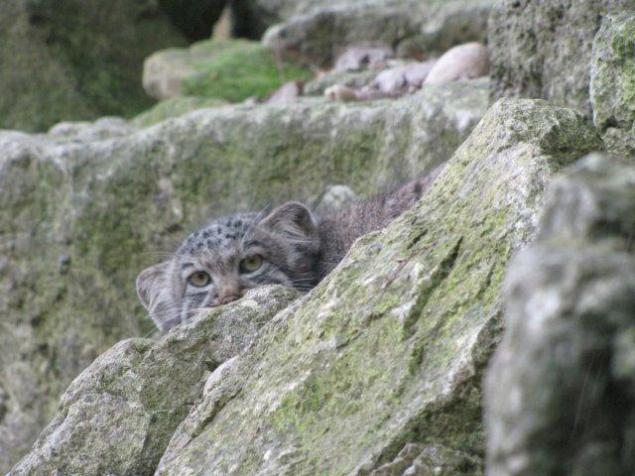
Propagated manul once a year, in spring. Pregnancy lasts for sixty days. The litter of 2-6 kittens, a length of about 12 cm, weighing up to 300 g Kittens are born spotted, blind and helpless. Maturity manul kittens reach about 10 months. Living Man'ula 11-12 years.
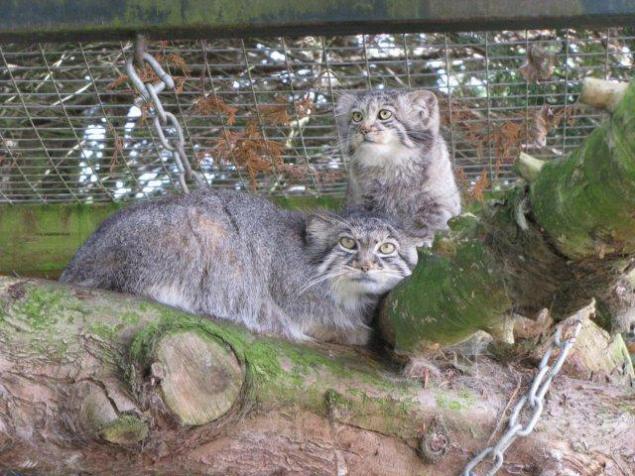
Pallas leads single sedentary. Active mainly at dusk and early morning; day sleeping in the shelter. Lair satisfied in the crevices of rocks, small caves, under rocks, in old burrows of marmots, foxes, badgers. Color Man'ula has exceptional properties of camouflage, to help him in the hunt. Pallas' cat itself - the slow and clumsy wild cats.
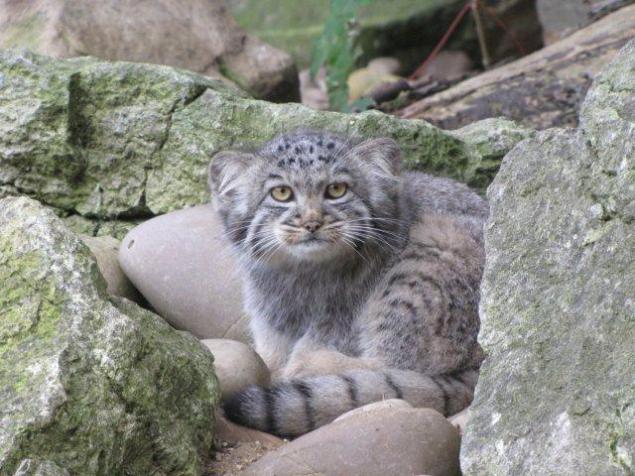
07
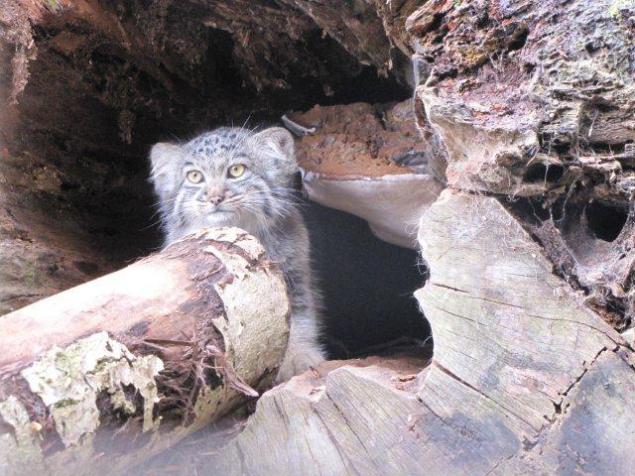
Source:
Total four grown kittens, which until recently were safely sheltered by his mother in the den and zoo staff did not know their exact number.
In addition, fearing bring any infection to susceptible to this kind of diseases of animals, zoo staff never even came to the den of the female manul. Only two weeks ago, when the grown young began to run out of the den in the outdoor aviary, it was found that four of them.
10 photos via goodnewsanimal

This is the first kittens of Pallas 'cat in the zoo since 2009, when a couple of Pallas' cats were brought to the UK from the Czech zoo Jihlava Zoo breeding program for rare species of cats.
Before the birth of these four kittens in zoos in Europe contained only 125 Pallas' cats. This is a great success of the breeding program since 1988 to 13 zoos of the world contained only 35 Pallas' cats. Each kitten -manul comes in a special account, and very valuable.
Soon these kittens veterinarians inspect and make them all the necessary vaccinations.

Pallas' cat (Felis manul; synonymous - Otocolobus manul) - a wild predator felines. The length of its body 52-65 cm, tail 23-31 cm; it weighs 2-5 kg. From an ordinary cat, he has a more dense, massive body on short thick legs, very thick hair (per square centimeter has to 9000 hairs.
Pallas' cat inhabits Central and Central Asia, South Caucasus and from Iran to Western Transbaikalia, Mongolia and northwest China. In Russia, Pallas' cat is found in the Chita region in the wilderness, in Buryatia in the forest steppe and steppe regions, as well as in the Republic of Tyva and Altai. Manuli live in areas with a continental climate, where the winters are cold and not very snowy.
View this rare and on the verge of extinction. Pallas listed in the Red Book of the Russian Federation, the IUCN Red List with a status of "Near Threatened" and in Appendix II of the Convention CITES (1995). Hunting Man'ula universally banned.

Pallas' cat eats mainly rodents, sometimes catching gophers, surchat or birds. During the summer, eating insects in large numbers. His mining pits and the guard at the stones and holes.

Propagated manul once a year, in spring. Pregnancy lasts for sixty days. The litter of 2-6 kittens, a length of about 12 cm, weighing up to 300 g Kittens are born spotted, blind and helpless. Maturity manul kittens reach about 10 months. Living Man'ula 11-12 years.

Pallas leads single sedentary. Active mainly at dusk and early morning; day sleeping in the shelter. Lair satisfied in the crevices of rocks, small caves, under rocks, in old burrows of marmots, foxes, badgers. Color Man'ula has exceptional properties of camouflage, to help him in the hunt. Pallas' cat itself - the slow and clumsy wild cats.

07

Source:





















